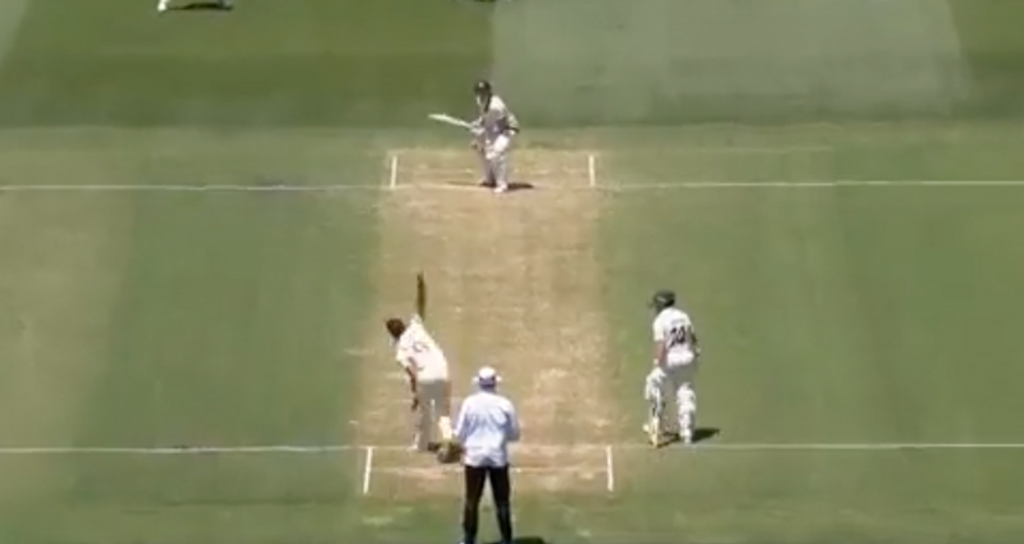
“It was probably the best I’ve felt in about six years,” said Steve Smith after his unbeaten 80 in the opening Australia-England ODI.
It seems like an outlandish claim. Smith, one of the game’s modern batting greats, is saying that in this half-century against a second string England side in a broadly meaningless ODI he felt the best he has in about six years.
If we are to believe him, it’s an ominous claim because Smith hasn’t had a bad six years with the bat. Since November 2016, Smith averages north of 60 in Test cricket – his peak ICC batting rankings rating of 947 is the second highest of all time. In the same time period, he averages more than 50 in ODIs.
So extreme was his dominance in Test cricket between 2015 and 2019 that those aforementioned numbers actually mask a relative dip in output over the last three years. Since November 2019, Smith only averages 42.42 in the Test arena and while his ODI numbers during this period are outstanding – an average over 70 and a strike rate in the low 90s – the format has been played so intermittently that it’d be disingenuous to suggest that those statistics accurately represent Smith’s overall form in that time. It is entirely believable then – Smith backed up that 80 not out with 94 in the second ODI – that this is indeed the best he has felt at the crease in some time.
Smith said that his knock at Adelaide was “was as close to perfection” as he’ll get and credited a year-long effort to rework his technique and balance at the crease. He added: “The start of last summer, I tried to get my hands back to where they were in 2015. I feel like I’m staying a bit more side-on now and I’ve got my feet and hands in sync together. [Thursday] was probably the first time I’ve actually had extended time in the middle with that change.
“It’s hard to base something on one innings but it felt as though things clicked for me like they did at the WACA in 2013. Hopefully it’s the start of a big summer.”
So how much has Smith changed his stance, not just recently but over the years? The below screenshots show Smith’s position around the point of release over the last 10 years.
2013 Ashes

Before his century at the WACA in 2013 which Smith credits as the innings that changed things forever, Smith stood conventionally side-on. This trademark bat lift – where his blade is pointed towards gully – is there but it is an otherwise traditional, broadly side-on technique.
2015 Ashes

Here we start to see Smith’s turn to the unorthodox. Smith has now abandoned the more traditional side-on stance. His left shoulder is pointing towards mid-wicket and his right shoulder is clearly visible to the bowler. His feet are not aligned in the way you’d expect with his front foot pointing towards the bowler and his back foot directed towards point. This was the method that brought him much of his success.
2017/18 Ashes

The fundamentals are broadly the same here. Chest on and feet not in alignment – here the angle of his bat is even more pronounced that usual, pointing towards point rather than gully.
2019 Ashes


Here is Smith arguably at the peak of his powers. The above two screenshots are both from the 2019 Ashes and they find Smith in different positions at the point of release. What the individual screenshots do not show is quite how much Smith was moving at the crease. While he was side on against Woakes and more chest on against Archer, in neither case was Smith close to stationary.
2021/22 Ashes

By now Smith’s returns – although good – had begun to drop off but the method was broadly the same as it was at his best. Perhaps slightly more side on that he was in 2019, Smith is still very much on the move.
2022/23

Smith now most closely resembles his stance back in 2013. He is markedly more side-on and much more still at the crease. During the coverage of the second ODI, an interview with Smith was broadcast where the Australian said that this more side on approach prevents him from following balls that outside his off stump and that he feels more compact with his new stance. The early signs are that Smith’s latest technical transformation will produce positive results for him.








